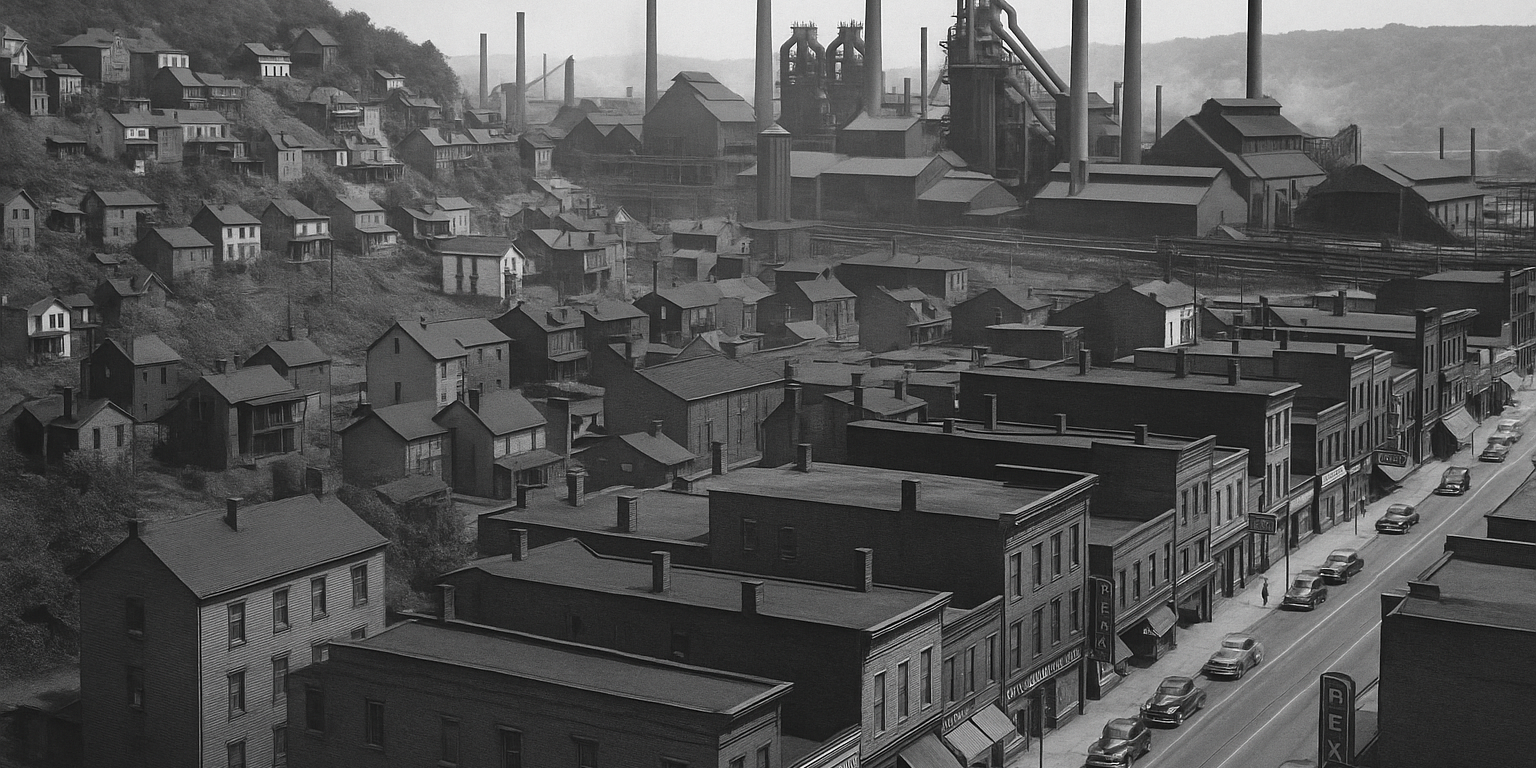Nestled along the Monongahela River just southeast of Pittsburgh lie the remnants of once-mighty steel towns: Braddock, Homestead, Duquesne, McKeesport, and Clairton. These towns weren’t just dots on the map—they were vital arteries in the industrial heart of America. They forged the steel that built bridges, skyscrapers, and warships. But today, echoes of molten furnaces and clanging mills have been replaced by silence and shuttered storefronts. This is the story of the rise, fall, and enduring legacy of the Mon Valley’s forgotten steel towns.
The Birth of the Mon Valley Steel Empire
In the mid-19th century, the Monongahela River became a natural corridor for industry. Its proximity to coal mines, iron ore, and river transport made it ideal for heavy manufacturing. The 1870s saw the rise of Andrew Carnegie, whose Edgar Thomson Works in Braddock opened in 1875 and revolutionized steel production with the Bessemer process. Homestead followed soon after, growing into one of the largest steelworks in the world.
Braddock: From Boomtown to Breaking Point
Braddock was once the pride of American industry. With the Edgar Thomson Steel Works operating 24/7, the town boomed. Immigrants from Eastern and Southern Europe poured in for jobs. At its peak, Braddock had 20,000 residents, multiple movie theaters, a thriving business district, and a grand Carnegie Library—the first in the U.S.
But the collapse came hard. The steel mill automated and downsized. Jobs vanished. By the 1980s, Braddock’s population had dropped by over 80%. Blight spread, and entire blocks were abandoned. Today, though the mill still runs, Braddock remains a symbol of industrial decline—and community resilience.
Homestead: Battlefields and Boom Years
Homestead holds a unique place in labor history. In 1892, it was the site of the bloody Homestead Strike, a defining clash between steelworkers and Carnegie Steel’s private security force, the Pinkertons. The strike failed, but it galvanized the labor movement and remains one of the most studied labor conflicts in U.S. history.
During the early 20th century, Homestead rebounded, becoming an industrial powerhouse once more. Its steel powered both World Wars. Yet by the 1980s, global competition and corporate mismanagement spelled disaster. The Homestead Works closed in 1986, taking 7,000 jobs with it. Today, The Waterfront shopping center occupies part of the old mill site.
Duquesne and McKeesport: The Middle Valley Collapses
Further down the river, Duquesne and McKeesport tell similar stories. Duquesne once hosted one of U.S. Steel’s most productive plants. McKeesport was home to National Tube Works, employing 10,000 people at its height. These towns thrived on the rhythm of shift whistles and mill schedules.
But they were hit just as hard—if not harder—than Braddock or Homestead. By the early 1990s, both towns had lost over 75% of their industrial base. Poverty soared. Infrastructure crumbled. Schools closed. The exodus was swift and painful.
Clairton: The Last Flame Still Burns
While much of the Mon Valley industry has disappeared, Clairton remains home to the Clairton Coke Works, the largest coke manufacturing facility in the U.S. Owned by U.S. Steel, it supplies fuel for the remaining blast furnaces at Edgar Thomson.
Yet Clairton has paid the price. Air quality has long been a concern, and health studies show higher-than-average rates of asthma and related illnesses. Despite the pollution and poverty, the plant is still a major employer—and a reminder of what once was.
Community Fallout: People Left Behind
The collapse of the steel industry devastated not only the economy, but the social fabric of the Mon Valley. Families that had worked in mills for generations found themselves jobless, often with limited skills transferable to other sectors. Poverty deepened. Crime increased. Public services shrank. Schools lost funding. Hospitals closed.
In many cases, residents didn’t just lose jobs—they lost identity. Steel was more than a livelihood in these towns. It was a way of life.
Federal Neglect and Political Apathy
While some point to foreign competition and automation, many residents also blame decades of federal neglect. Promised retraining programs never fully materialized. Federal investment focused on big cities, leaving post-industrial towns behind. Pittsburgh transitioned to a service economy. The Mon Valley didn’t.
Mayors and local leaders tried to advocate, but with dwindling tax bases and state-level indifference, progress was slow. The Mon Valley became a cautionary tale of American deindustrialization.
Cultural Legacy: Art, Music, and Memory
Despite the decline, the spirit of the Mon Valley endures. Artists and filmmakers have found inspiration in the rusting mills and resilient people. George Romero filmed scenes of The Deer Hunter and Martin in Braddock. Rapper Mac Miller and actor Michael Keaton have spoken about the cultural grit of these towns.
Braddock’s revival efforts—including former mayor John Fetterman’s initiatives to attract artists and entrepreneurs—have gained national attention. Murals, community gardens, and pop-up art exhibits dot the landscape, offering sparks of hope.
Lessons from the Mon Valley
What happened in Braddock, Homestead, and their sister towns isn’t just a Pittsburgh story—it’s an American one. It’s about what happens when industry disappears, when working-class jobs vanish, and when communities are left to pick up the pieces.
It’s also about resilience, pride, and memory. These towns are not just ruins—they’re reminders. They deserve to be remembered not for what they lost, but for what they gave: the backbone of a nation built on steel.









